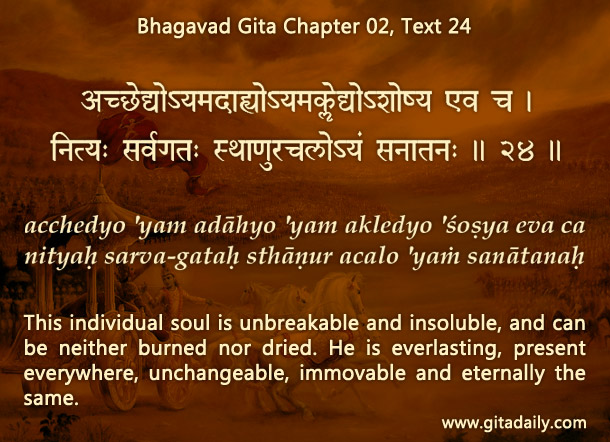The idea of a soul is found in the metaphysical ruminations of almost all traditions. But few traditions explain clearly what the soul is. They frequently use the term as a metaphorical reference to our non-material essence.
Such metaphorical usages often extend to the essence of anything. For example, ‘the soul of Japan was shattered by the atom bomb attacks.’ Usages like these are not semantically wrong. But when coupled with the prevailing fuzziness about the notion of the soul, they tend to reduce the soul to a metaphor. It then becomes all too easy for materialists to banish the soul into non-existence, leaving occasional references to it ontologically meaningless.
That the soul is beyond fragmentation, incineration, dissolution and desiccation emphasizes the ontological actuality of the soul.
Such degeneration to meaninglessness is graphically illustrated in the phrase ‘the soul of materialism’ used by some materialist philosophers. Materialism’s central dogma is that matter is the only thing that exists; so the soul being non-material doesn’t exist. Therefore, the phrase ‘the soul of materialism’ makes sense only when the usage ‘soul’ is stripped of all ontological import.
Gita wisdom pre-empts such fuzziness and meaninglessness by explaining that the soul is a concrete higher-dimensional entity, a being that animates the body with consciousness. Its assertion (02.24) that the soul is beyond fragmentation, incineration, dissolution and desiccation emphasizes this ontological actuality of the soul.
How?
Breaking, burning, dissolving and drying – these apply to things that really exist. By applying them to the soul, the Gita communicates that the soul is just as real. And by simultaneously asserting that the soul is not destroyed by the actions that destroy physical things, it conveys that the soul exists at a level higher than the physical – the metaphysical level.
When we grasp the reality of the soul, we infuse our quest for self-realization with clarity, gravity and urgency, thus accelerating our attainment of lasting spiritual happiness.

Explanation of article:
http://www.youtube.com/watch?v=679lQ4m70o8

Leave A Comment